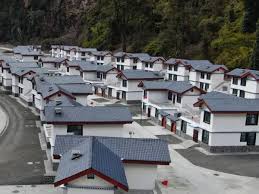NEW DELHI: China is set to develop 175 more border villages on its side of the Line of Actual Control (LAC) facing Arunachal Pradesh. These settlements will be in addition to the 628 “Xiaokang” or prosperous villages near the LAC.
Sources say these villages are apparently being set up to bolster territorial claims and enhance military readiness along the LAC, which is not demarcated on the ground. This move is part of a larger effort to construct 900 LAC villages, including 200 near the Indian boundary, which will function both as monitoring points and potential military bases in conflict scenario with India.
The Indian side is not just looking at the military-related motives of these settlements, but also the long-term implications. China could be looking to build a strong legal defence under the Border Defence Cooperation Agreement (BDCA), 2005, with India. The Article VII of the BDCA says “the two sides shall safeguard due interests of their settled populations in the border areas”. So as and when a situation arises to demarcate the LAC, these “settled populations” villages are not likely to be disturbed, the sources say, adding that Indian villages facing these new settlements are currently very thinly populated.
In addition to creating these villages, China has undertaken extensive infrastructure development projects in Tibet and in areas near the LAC.
China’s 14th Five Year Plan (2021-2025) includes expansion of the Nyingchi phase of the Sichuan-Tibet railway line, preliminary work on the Hotan-Shigatse and Gyirong-Shigatse rail lines and the Chengdu-Wuhan-Shanghai high speed railway network.
The plan includes upgrading the national highways G-219 and G-318, both of which run parallel to India along the LAC. The G-219 is opposite Ladakh and Himachal Pradesh while the G-318 is opposite Arunachal Pradesh and Sikkim.
Beijing’s dual goals of promoting the integration of Tibet into China and ramping up infrastructure development are seen as a strategy aimed at deepening Chinese influence and asserting its power in the region. Last week, in an attempt to cover up the “capture” of Tibet, the Chinese conducted celebratory ceremonies on its side of the LAC and labelled them as the “65th anniversary of democratic reform” in Xizang (Tibet). The illegal dissolution of the Tibetan government headed by the Dalai Lama took place on March 28, 1959. The celebratory ceremonies focused on two sites north of Arunachal Pradesh and one spot north of Sikkim.


